Attack like Bobby Fischer
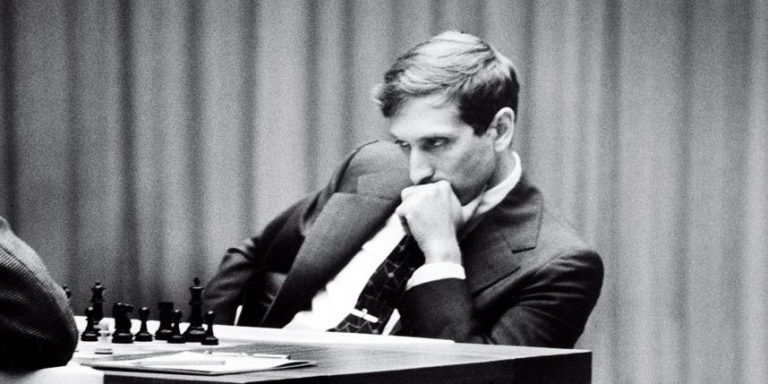
No one can deny that Robert James Fischer is one of the greatest minds in chess history. His playing style was puzzling to all the grandmasters of his era as it was simple and perfect! You can see exactly how he is planning to win and you are not able to stop him. In this article we are going to show you Fischer’s favorite opening with White to gain a quick attack on the kingside showing his tactical genius as well!
When it comes to winning with white. Fischer loved to employ the king’s Indian attack for many reasons, it is simple, clear, and systematic. The plan is always the same against almost all black responses!!
Together we are going to analyze some of his games against the best players of his time starting with the 1968 battle of Fischer against Geller.
Geller was famous for his deep analysis for the French defense. He revolutionized it showing the great potential to counter attack with black and how to win strategically using the French defense. In this game Fischer destroyed Geller’s favorite opening with the simple King’s Indian attack!
Fischer Attack Crashes Geller
The game started as a normal French game with
1.e4 e6 2.d3!? d5 3.Nd2 c5 4.g3 Nf6 5.Bg2 Be7 6.Ngf3 0-0 7.0-0 Nc6
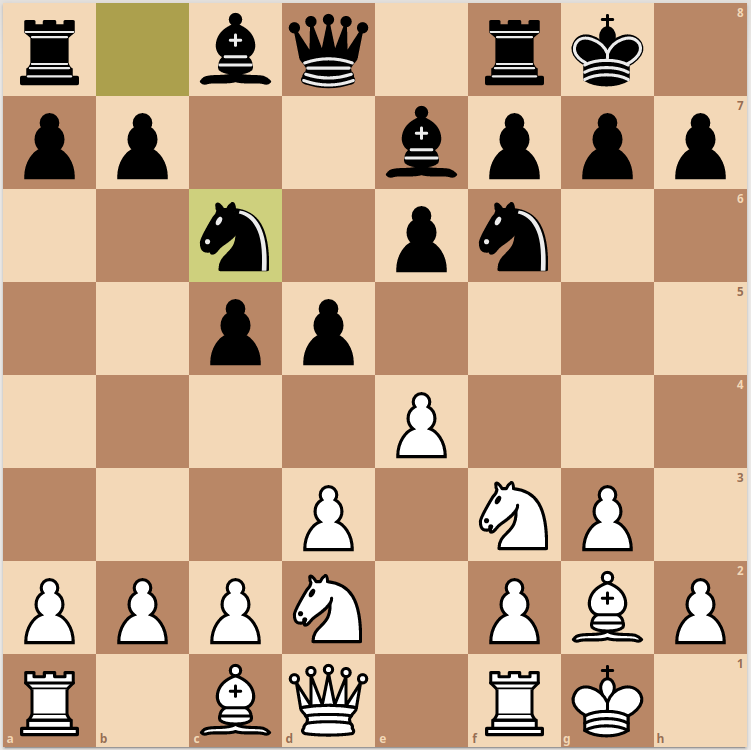
Until now it is a standard position for the king’s Indian attack Geller developed his pieces in a very harmonic way, controlling the center, safe king (or he thought it is safe!) and perhaps he was thinking about developing his queenside and trying to lunch a pawn storm on the center and queenside.
However, white will start to prepare for an attack on the center and the kingside by the next very important move.
8. Re1
the goal of this move is to prepare for the closure of the center with e5, vacate the f1 square for the queenside knight to transfer it into the operation area via Nf1–Nh2–Ng4.
8. …Qc7
developing the queen into better square trying to connect the rooks to finish his development
9. e5 Nd7 10.Qe2 b5
till now it feels like everyone is going with his plan. White also develops his queen to further protect the center pawn e5 while black start his pawn storm on the queenside.
11. h4 a5 12.Nf1 Nd4!?
The modern approach in a position like this is 12 … Ba6 to force c4 in the future breaking open the white position on the queenside as quickly as possible before it is too late!
13. Nxd4 cxd4 14.Bf4 Ra6!?
For white everything is thematic, he just develops his last piece into the game overprotecting the e5 square and eyeing down the black queen .Black idea is interesting, he wants to transfer the a8 rook into c6 square to overpressure the C file trying to penetrate the queenside.
15.Nh2 Rc6 16.Rac1
Black achieved his goal while white showed black simply that his idea is not enough! He doesn’t have real pressure to do any damage to white position. Black tries the next move to vacate the a8 square for the second rook to triple on the c file while developing his last piece to the game by playing
16. …Ba6?!
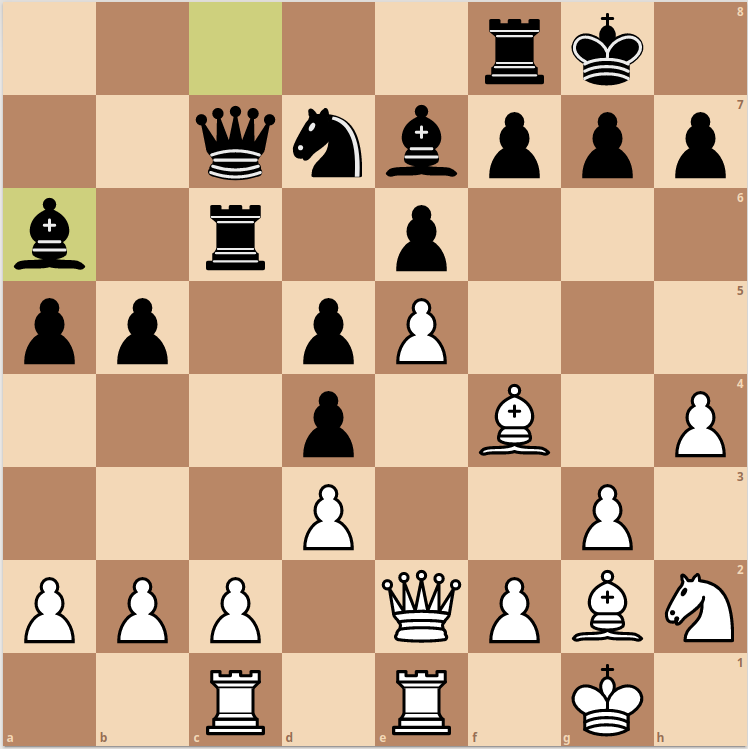
The problem with this move is that it is just too slow! White immediately takes advantage of the position showing his tactical skill and inflecting a permanent damage to black position by playing the next brilliant move.
17. Bxd5! exd5
Black accept the challenge, however it was maybe better to try the simple (17…Rc5 18-Bg2 Rd8 or Nb8 accepting a pawn down but keeping some pressure on the queenside and chances for a long term fight!)
18. e6
the point of this tactical trick getting his piece back with a discovered attack on the black queen
18. …Qd8 19.exd7 Re6!
Forced and only move to avoid immediate disaster ( 19…Bf6?? Qe8!! + - just winning for white)
20. Qg4
an excellent move reminding black that the point of the king’s indian attack is to pressure his kingside to the point of collapse!
20…f5
in case Geller is thinking about taking his pawn back with 20…Qxd7 then the simple Rxe6 Qxe6 fxe6 Re1 Bc8 and Nf3 simply clearly better for white. Black has a terrible bishop, 3 pawn islands, and weak d4 pawn .For experienced players such as Fischer and Geller it is just lost for black.
21. Qh5 Qxd7 22.Nf3 g6 23.Qh6 Bf6 24.Rxe6
just in time, giving black no chance to catch his breath and transforming his positional advantages into a clear win.
24. …Qxe6 25.Be5 Bxe5 26-Re1!
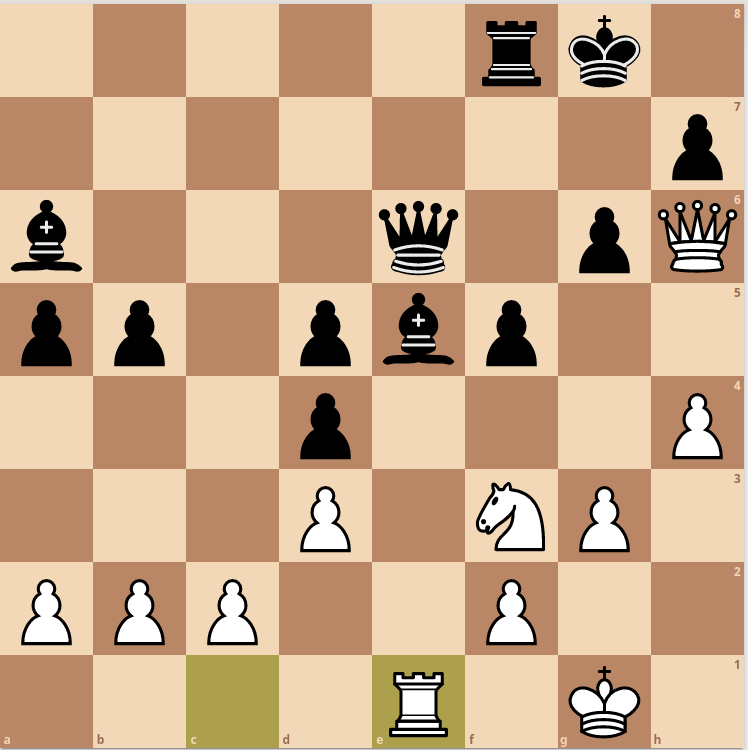
Pinning and winning! If black tries Bg7 then Qxg7+! Kxg7 Rxe6 and it’s a won endgame as the next move white will capture the d4 pawn having a royal knight against a very bad bishop with extra pawn as well
26 …f4
trying to mix things up.. but then Fischer finishes it off as it follows
27. Rxe5 Qd7 28.h5 fxg3 29.hxg6 gxf2+ 30.Kxf2 hxg6 31.Qxg6+ Qg7 32.Rg5
and black resigns as the resulting position is completely lost as he is forced to lose the bishop on a6.
You can replay the whole game in my LiChess study.
The next game shows how quickly can black get crushed on the kingside if he underestimates white potentials!
Fischer Attack against Ivkov
1. e4 c5 2.Nf3 e6
this is a standard Sicilian position and it is especially popular for those who enjoy playing both the French defense and the Sicilian defense. The play usually is strategic and positional.
3. d3!
Refusing to go into the positional territory and transposing the whole opening into king’s Indian attack territory.
3…Nc6 4.g3 d5 5.Nbd2 (5.Bg2? dxe4 6.dxe4 Qxd1 7.Kxd1 and black equalized totally.)
5…Bd6 6.Bg2 Nge7 7.0–0 0–0
8.Nh4!?
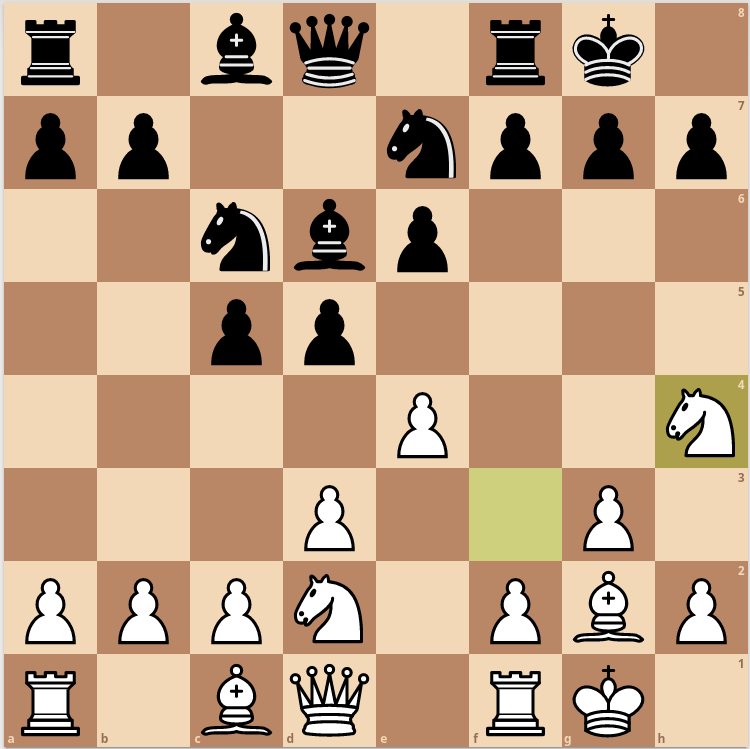
This is an interesting move. This move is aiming to quickly have the dual “f and e” pawns pushed up the board to get a quick kingside attack.
8… b6 9.f4 dxe4 10.dxe4 Ba6 11.Re1 c4
Black is trying to develop some sort of counter play on the queenside. However, this is just slow. Although an engine would tell you that black is fine. Black problem is the lack of a good plan. White plan is clear. He will push his pawns up the board, get more pieces around black king and sacrifice something to open up the position! But first thing is first when you have one move that can kill off your opponent idea do it!
12. c3!
this move is just so strong as it closes the black light square bishop and slow down his ambition on the queenside
12…Na5 13.e5 Bc5+ 14.Kh1 Nd5 15.Ne4 Bb7 16.Qh5
This is the start of white aggressive play on the kingside.it is noticeable that 16.Nxc5 is a good alternative doing permanent damage to black pawn structure and getting the two bishop advantage. White is slightly better after the Nxc5 move.
16…Ne7 17.g4!
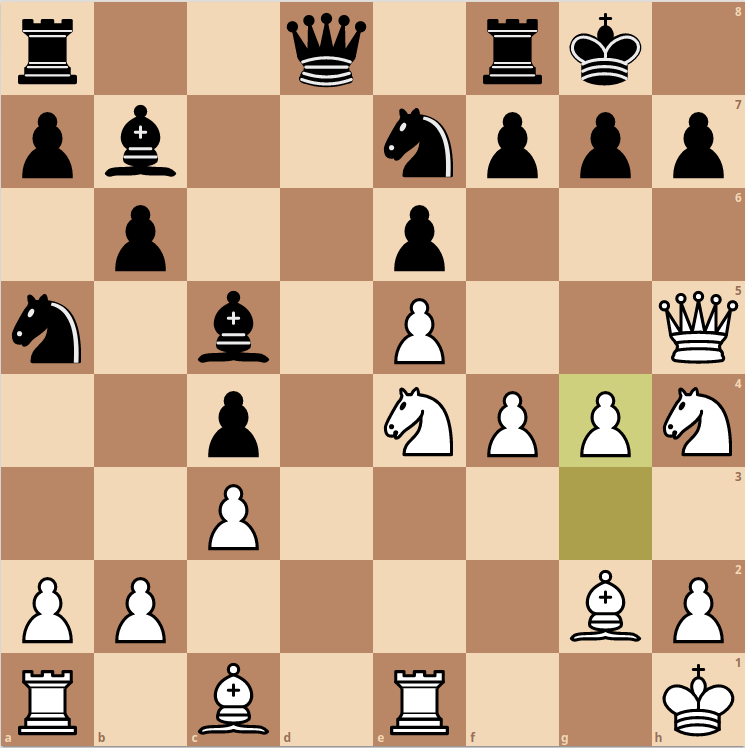
17…Bxe4?
Black panicked seeing the simple plan of f5-f6. He wanted to reduce the pressure on the kingside, however it started to look more and more dangerous for black. Perhaps a simple move like Ng6 would keep the game in balance forcing some concessions and exchanges.
18. Bxe4 g6 19.Qh6 Nd5
If black tries Kh8 the next moves of Nf3-Ng5 mixed with f5 is winning for white. Black is too slow to hold this position
20.f5
All according to the plan, capitalizing on the dark square weaknesses and breaking through the kingside defenses.
20…Re8 21.fxg6 fxg6
22. Nxg6
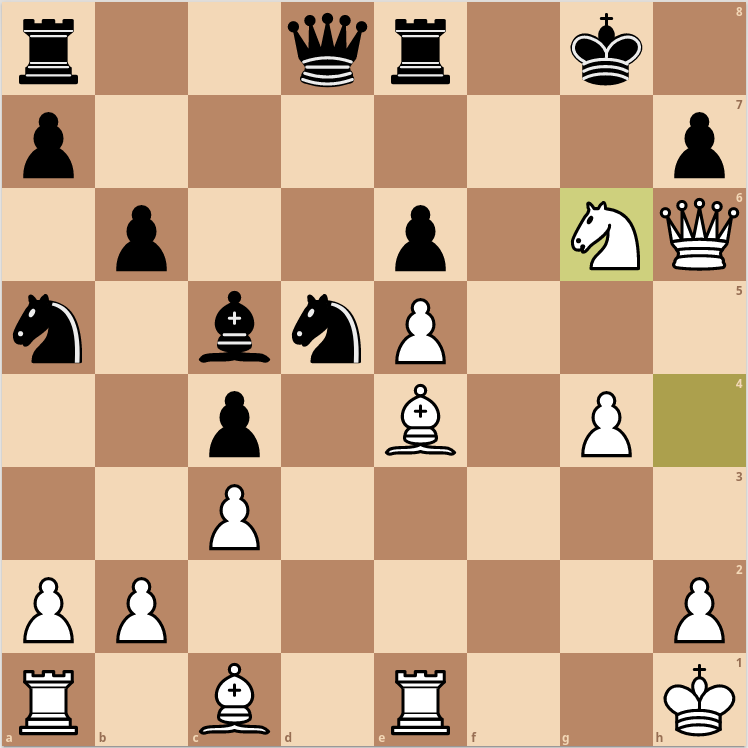
a killing blow ,the knight can’t be taken due to a quick checkmate Qxg6+ kf8 Rf1+and Rf7 mate.
22…Qd7 23.Nf4
23…Rad8 (23 … Nxf4 24.Bxf4 Rad8 25.Rad1 Qg7 26.Rxd8 Rxd8 27.Bxh7! Qxh7 28.Qg5 followed by taking the rook on d8.)
24. Nh5 Kh8 25.Nf6 Nxf6 26.exf6 Rg8 27.Bf4 Rxg4 28.Rad1 Rdg8 29.f7!!
black resigns as the game would end with 29…Qxf7 30.Be5+ Rg7 31.Qxh7 mate!
You can rewatch the entire game in my Lichess study.
We will end up with an absolutely crushing game from white side. Black didn’t do any obvious mistakes or even inaccuracies. Fischer showed us again why the king’s Indian attack in the hands of an aggressive player is extremely deadly.
Fischer’s Attack against Myagmarsuren
Let’s take a look at this famous game, that Fischer won with a famous combination.
1.e4 e6 2.d3 d5 3.Nd2 Nf6 4.g3 c5 5.Bg2 Nc6 6.Ngf3 Be7 7.0–0 0–0
8.e5
Standard move for this opening and standard position that was played thousands of times. I would like to mention that this e5 is the key of all white attack. After black commit his king to the kingside by castling. e5 is a very strong move that prohibit the black king from having a natural defender on f6.it is also a move that gains space on the kingside.
8…Nd7 9.Re1 b5 10.Nf1 b4!
Straightforward plan and it is the modern approach for this position gaining space quickly on the queenside trying to not allow white the time for his kingside play
11.h4
This move is so important as it both gives more control to g5 square, open up the h2 square for some maneuvers like Nh2-Ng4-Nf6/Nh6+ and secures the f4 square.
11…a5! 12. Bf4 a4!
and here Black a3 move is a real threat breaking the queenside making a lot of weaknesses, white next move avoids all that and shuts down black play.
13. a3! bxa3 14.bxa3 Na5!?
Continuing with the plan of breaking open the queenside with c4,perhaps Ba6 followed by c4 is a little better as black will also develop a minor piece instead of moving the same piece twice.
15. Ne3 (not bad but not perfect. the modern approach is N1h2)
15…Ba6 16.Bh3 d4 17.Nf1 Nb6 18.Ng5 Nd5
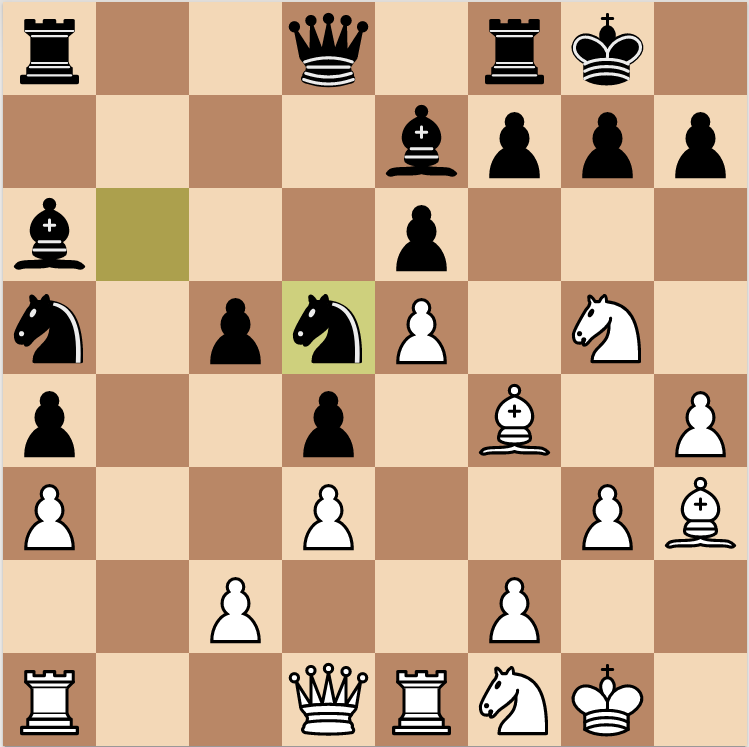
So far black did nothing wrong. His play is almost perfect and his strategic idea is sound The problem is… white play is so quick and natural that one wrong move from black would cost him the game as we will see.
19. Bd2 Bxg5 20.Bxg5 Qd7 21.Qh5 Rfc8 22.Nd2 Nc3?!
Black needed to be extremely quick with c4! to ensure equal chances for the game!. He doesn’t have time for pretty looking moves like Nc3.
23. Bf6!!
Cutting off the queenside pieces from defending the king and capitalizing on the dark squares
23 … Qe8!
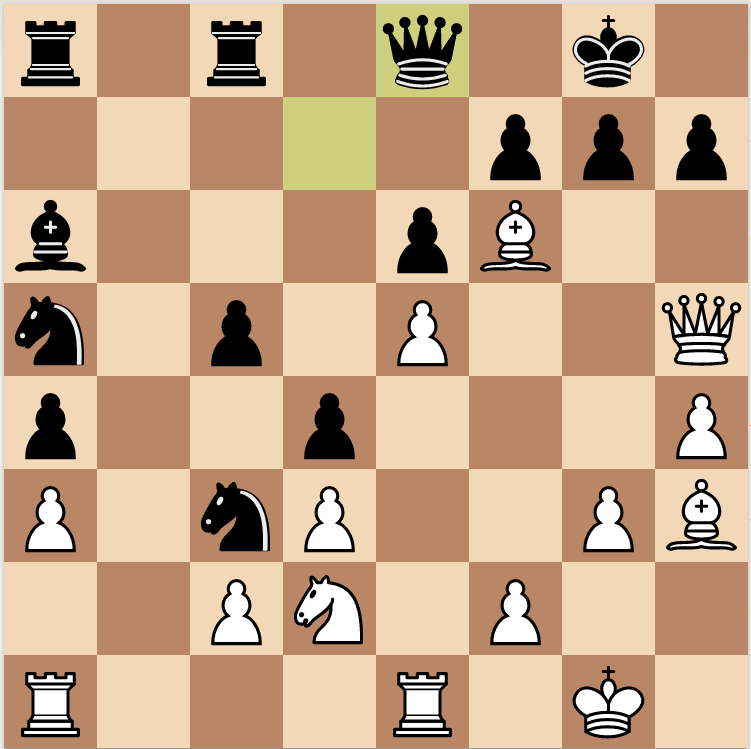
Only move to avoid immediate disaster. 23…Kh8? may look great at first but then 24.Nf3 gxf6 25.exf6 Nd5 26.Ne5! Nxf6 27.Qh6 Qe7 thinking it is over and black is up a piece the next shocking move is 28.Bxe6! forcing black to resign as he is at least losing his queen 28…fxe6 or Qxe6 then Ng6+ and in case of ignoring the bishop playing the best move 28…Ng8 then 29.Qh5 followed by Bxf7 with 3 pawn for the piece and a mating attack!
24.Ne4 g6 25.Qg5 Nxe4 26.Rxe4
26 … c4?!
Ignoring the white threats hoping to be faster correct decision in some situations but not here! Bb7 was needed to control the long diagonal and provide defense to e6 if needed by playing Bd5
27.h5 cxd3 28.Rh4!!
28 … Ra7 (28..dxc2 29.hxg6! fxg6 30.Rxh7 with mate)
29.Bg2
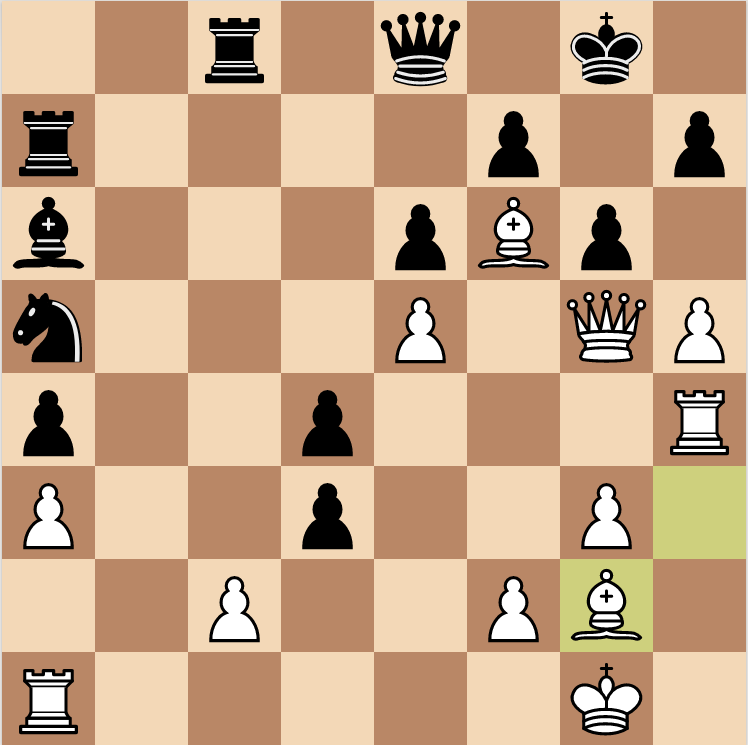
rerouting the bishop to the e4 square to get him to the black king as well!
29 … dxc2 30.Qh6 Qf8 31.Qxh7+!
Black resign in view of Kxh7 32.hxg6++ Kxg6 33.Be4 mate.
You can replay the whole game in this LiChess study.
Conclusions
Through these three games we conclude that the king’s Indian attack is a dangerous weapon for white. Bobby Fischer used it against the best French/ Sicilian players of his time.
The king’s Indian attack is extremely annoying for the black player. if black doesn’t come up with a quick reaction, he will be destroyed in a few moves with brilliant sacrifices on his king!
We would recommend this opening for all levels of play. It is worth the time and effort to have it even as a surprise weapon for your opponent and it will serve your repertoire very well!
Have fun!!